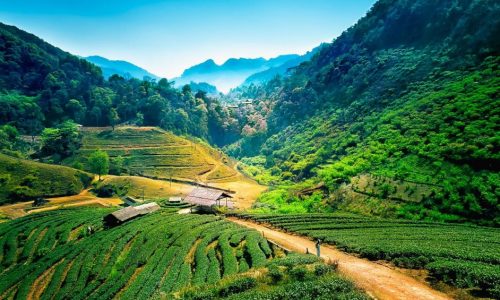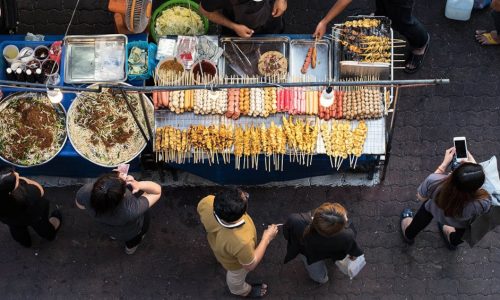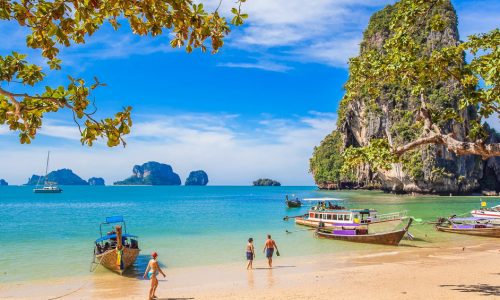Thailand travel tips
1.Best time to visit Thailand
Thailand is best visited between late November and early April. The nation may be visited all year round even though the climate differs throughout the board. The eastern and western beaches of the south have different climates. In the winter, the west coast is more advantageous. The majority of the year is pleasant for travelers along Thailand’s east coast. There, rainfall is least in January and February and most abundant in November.
2.Do’s and Don’ts in Thailand
Learn a few useful phrases
Thais are very proud people and will appreciate you taking an interest in their language. Here are some of our go-to phrases:
Hello – Sawasdee krap
Thank you – khawp khun krap
Goodbye – Lah gorn
The bill please – Kep tang krap
Delicious – Aroi
No spice – Mai pet
No sugar – Mai sai nam tam
Avoid drinking tap water
Avoid drinking tap water in Thailand without purifying it first. We use a Steripen to purify our drinking water. Its ultraviolet light purifies water in seconds making it safe to drink.
Carry cash
It is highly recommended to carry cash with you while going to the markets of Thailand. A credit card usually doesn’t work at many local shops and stalls. Some smaller accommodations also prefer taking cash.
Be careful while enjoying the nightlife
While enjoying your time in Krabi, Bangkok or Phuket, ensure that you follow the general safety tips. Do not leave your drink unattended, avoid going to ill-lit areas, avoid getting heavily drunk, etc.
Electricity
Supplied at 220 volts AC. Two-pin sockets taking plugs with flat prongs are the norm.
Cover up
Whether you are male or female, skimpy clothing is frowned upon. Especially when visiting temples and places of worship and in rural areas. Make sure to respect the culture and cover your knees and shoulders when entering a temple or wat
Watch out for scams
Speaking of Tuk-tuks, watch out for the tuk tuk scam. If the price seems too good to be true, it probably is. That means they’ll be taking you around to perfume shops, antique dealers, jewelry stores, and anything else they can get you to buy. Just say NO if you do not want so.
Learn to bargain
For example, if you go to a flea market and you are looking to buy a souvenir, always ask for the price first and negotiate. Once they won’t go any lower, go to another store and repeat. Do that a few times for other stores nearby, and you should be able to get the cheapest price possible.
3.Thailand visa
Passport holders from the following countries/territory are not required to obtain a visa (Visa Exemption) when entering Thailand for tourism purposes and will be permitted to stay in the Kingdom for a period not exceeding 30 days on each visit:
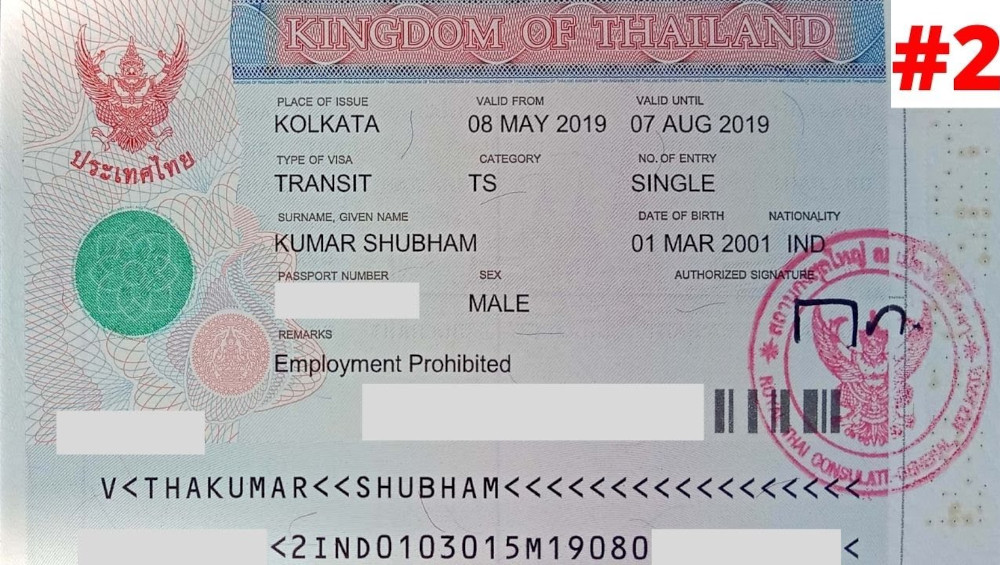
USA, Canada, UK, Australia, New Zealand, Italy, France, Germany, Greece, Austria, Belgium, Czech Republic, Denmark, Estonia, Finland, Hungary, Iceland, Ireland, Latvia, Liechtenstein, Lithuania, Luxembourg, Monaco, Netherlands, Norway, Poland, Portugal, San Marino, Slovakia, Slovenia, Sweden, Switzerland, Ukraine, Sweden, Qatar, Oman, UAE, Maldives, Bahrain, Kuwait, Andora, Hong Kong, Israel, Macau, Mongolia, Russia, Japan, South Korea, Mauritius, South Africa, Spain, Argentina, Peru, Brazil, Chile, Korea, Peru and ASEAN countries.
Other passports or depending on your nationality (passport), you can also apply the Thailand E-visa before flying/entering the country by the below link: https://www.thaievisa.go.th/
When you start to apply or after receiving your E-visa, kindly take time to double check and make sure all the information in the E-visa are exactly with the information in your passport and in your international flight (Ex: full names, number of passport, date of expiry, date of birth, gender, period of entry Thailand, name of airport/city when entering Thailand, etc.)
4.Popular local foods in Thailand
Pad Thai – Thai style fried noodles
Pad Thai, one of the most well-known Thai dishes, is easily found in Bangkok. After adding some bean sprouts, eggs, and onions and mixing for a few minutes before serving, visitors can also add the hot pan-cooked noodles. This dish comprises a cuisine that stimulates customers’ taste senses with a combination of four spices, including chili powder, fish sauce, sugar, and peanuts.
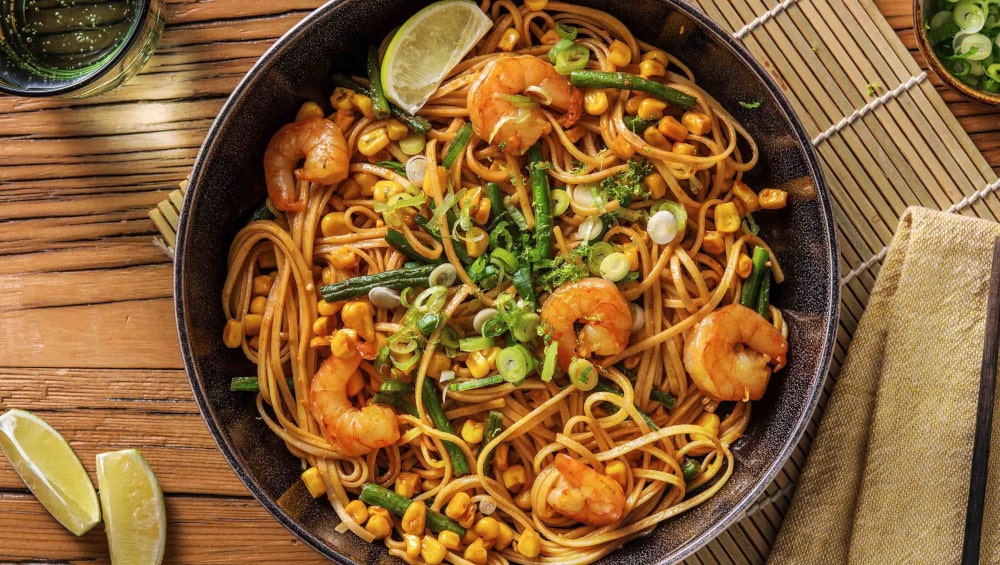
Tom Kha Gai – Chicken soup with Thai coconut galangal
One of the top 10 most delectable Thai foods, Tom Kha Kai or Tom Kha Gai, is a chicken dish made with galangal that has the typical sweet and sour flavor of Thai food. Due to the use of coconut milk, galangal, lemongrass, chilli, coriander, straw mushrooms, and chicken, this meal has a sweeter yet spicy flavor. Tom Kha Kai is frequently served as a soup in Thai dinners and is made more aromatic and sweeter by the addition of coconut milk and fresh lemon leaves.
Tom Yum Goong – Thai style spicy and sour soup
Thai hot and sour soup, or tom yum goong, is a well-known Thai dish that embodies many essential elements of Thai cuisine and has gained international renown. To create this distinctive cuisine, fresh shrimp and straw mushrooms are combined with lemongrass, chilli, galangal, lime leaves, chives, lemon juice, and fish sauce. Tom Yum Goong is a popular dish because of its characteristic sour and spicy flavor. It is adaptable and works well with dishes that include steamed rice or vermicelli.
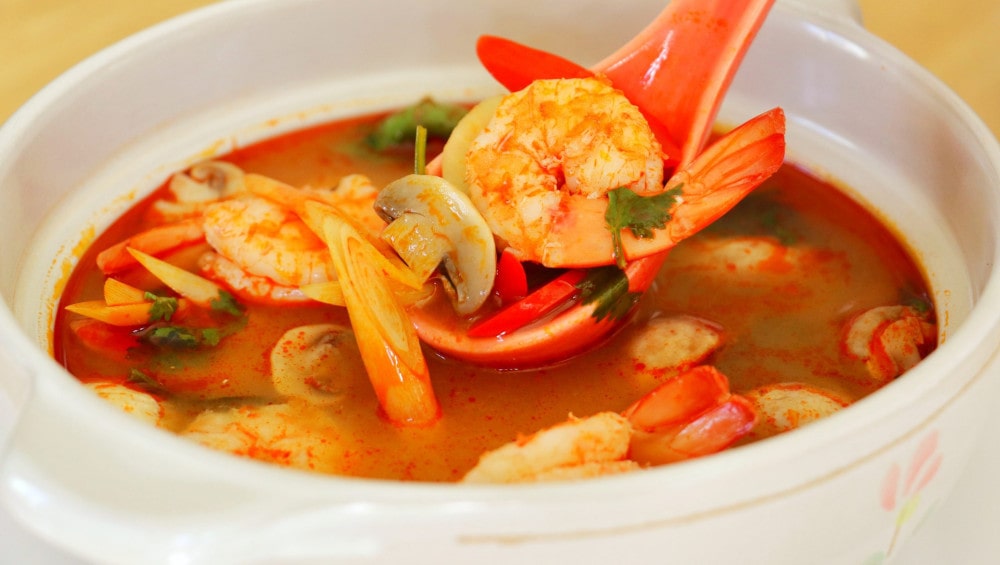
Pad Krapow Moo Saap – Stir-fried pork with basil
It is made in a hot skillet using ingredients including pork, basil, green beans, fresh chilli, soy sauce, and a little sugar. It is one of the most well-known Thai meals served for lunch and supper in Thailand. Steamed rice and, if desired, a fried egg (kai dao) is typically served with this meal. Since spicy food is a staple of Thai cuisine and the majority of Thai people can tolerate it, chilli must be included in this meal. If you can’t handle spice, ask them to reduce the amount of chilli.
Som Tam – Thai green papaya salad
Som Tam, a spicy Thai salad with northeastern Thai origins, is made simply by mixing shredded green papaya with dried shrimp, tomatoes, beans, and other ingredients. Other accompanying ingredients include lemon, chilli, garlic, and roasted peanuts. It is a well-known dish in Thailand and is bursting with the traditional tastes of Thai food, including the spiciness of chilli, the sourness of lemon, the sweetness of jaggery, and the saltiness of fish sauce. To temper the dish’s heat, Som Tam is frequently served with vermicelli and raw veggies.
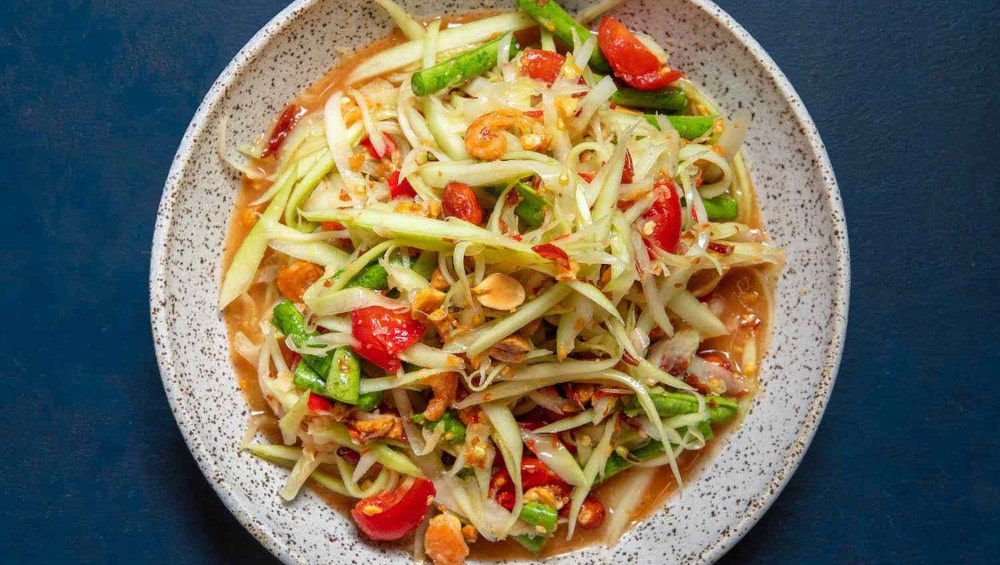
Gaeng Keow Wan Kai – Chicken with green curry
The primary components of Gaeng Keow Wan Kai, also known as green curry chicken, are chopped fresh chicken, bamboo shoots, eggplant, coriander, and basil. It is regarded as one of Thailand’s most delectable meals. This must mix a spoonful of green curry with hot coconut milk to give the meal its lovely green hue, and they frequently serve it over steamed rice made from Thai fragrant rice. Because of its uniqueness, visitors to Thailand must experience this distinctive cuisine.
Gaeng Daeng – Red curry
One of the top 10 most well-known Thai meals, created with beef, red curry paste, coconut milk, and a few finely chopped lemon leaves to produce a flavorful curry with a distinctively spicy flavor. A sweet lovely lady but no less tender compared to the sweetness of coconut milk, the spicy flavor of curry powder, the softness of the meat, and the delicate adornment of this meal.


